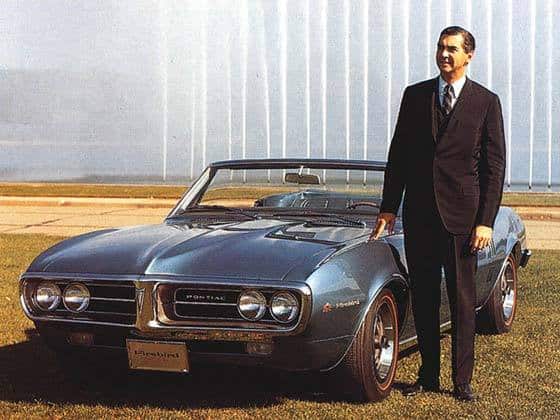
28 Jun COCAINE, LIES AND VIDEOTAPE
COCAINE, LIES AND VIDEOTAPE The trial of John DeLorean.
PART I
The year was 1982, and indulgence was the theme of the day. Feathered hair, flashy clothes, personal computers like the Commodore 64, were finding their way into American homes, and cocaine was the party drug of the time. Christmas parties were catered with fondues and lines of coke could be found in the bathroom. It wasn’t uncommon for Greg from accounting to be snorting lines with Phyllis from human resources, while jungle bell rock played over the HI-FI sound-system.
It had been nearly nine years since John DeLorean left General Motors to follow his dream. And success, which he had experienced throughout his professional career, had not exactly come easy, since starting DMC (DeLorean Motor Company), he built his dream car, but so far things seemed like a nightmare. Little did he know that in October of 1982, things were going to get much worse.
JOHN DELOREAN
John Zachary Delorean was born January 6, 1925 in Detroit, Michigan. His parents, both immigrants, found factory work in Detroit. Limited by their skill with the English language, his father and mother also had to find odd jobs to make ends meet.
John took advantage of the geography he was born into. He graduated from public schools and then after a stint in World War II found his way into an automotive engineering institute with Chrysler. John was born with an engineering mind and quickly found a home at Chrysler. Although he was at Chrysler for less than a year, he quickly gained the attention of his employer with an improvement to the Ultramatic automatic transmission, giving it an improved torque converter and dual drive ranges.
In 1956, DeLorean accepted a job at GM to work in the Pontiac division, and it was here that he became a giant in the industry. He steadily rose in the ranks to eventually become division chief and he was responsible for the Pontiac GTO (lovingly called the “Goat” by muscle car enthusiasts). By the age of 40 Delorean was the youngest division head at GM and had risen to success that his immigrant parents could never have imagined.
DeLorean was wealthy. He made sizable investments in the San Diego Chargers and the New York Yankees. He was flashy, he had long sideburns and wore unbuttoned shirts. While working as an executive for Chevrolet, he invited Lee Iaccoca (President of the Ford Motor Company), to be his best man at his second wedding. He was brazen to say the least.
In 1972, DeLorean was appointed to the position of vice president of car and truck production for the entire General Motors line, and his eventual rise to president seemed inevitable. He was just about to reach the pinnacle of his industry and lead the largest automaker in the world, but that wasn’t enough for John Delorean. In 1973 he left it all behind to create his own company, and DMC was born.
Production delays plagued DMC and it wasn’t until 1981 that the DMC-12 finally reached the consumer market. The DMC-12 was a stainless steel sport coupe with iconic gulf-wing doors. However, the market was unkind to DMC. Interest in the DMC-12 quickly dwindled, competing models with lower price tags and more powerful engines (such as the Chevrolet Corvette) sold in record numbers during 1980-1 in spite of the ongoing recession. By February 1982, more than half of the roughly 7,000 DMC-12s produced remained unsold, DMC was $175 million in debt, and the factory was placed in receivership.
When a neighbor of DeLorean, a man by the name of James Timothy Hoffman, approached him with an opportunity to make some quick cash, he said he was interested.
THE SETUP
Drug smuggling was much more booming of an industry in 1982 than automobile manufacturing. The cartels in South America were flush with U.S. Currency. It was a lucrative enterprise for the U.S. Government as well. Prosecuting drug smugglers led to forfeiture of cash and property. Crime was paying well and both sides were getting rich.
The “War on Drugs” brought with it long prison terms in an effort to deter people from taking on the trade. However, the harsh sentences didn’t deter, but rather just created a large population of government informants and snitches, willing to make deals with the government to avoid prison time. These snitches would often offer a bigger fish or a more attractive arrest for the government, while their sins (which in too many cases included murder) would be wiped clean by their service to society. John DeLorean, that flashy, rich, CEO, was a much better headline than James Hoffman. Who ever heard of James Hoffman?
James Timothy Hoffman was a drug smuggler. He was caught by the government and when he was about to face a long prison system, he mentioned to the federal agents he had this interesting neighbor.
In 1982 Hoffman approached DeLorean and asked him if he wanted to make some money. The financially strapped DeLorean said yes. Hoffman set up a series of meeting between Delorean and undercover federal agents, all but the first meeting was recorded on audio and video tape. Hoffman claimed that at the first meeting DeLorean claimed he wanted to invest up to $2 million in “China White,” a form of heroin.
On October 19, 1982, the players met in a hotel room near Los Angeles International Airport to finalize their plans. According to the Feds, DeLorean was going to finance the importation of $24 million of Colombian cocaine. DeLorean was arrested after undercover agents presented him with a suitcase filled with fifty-five pounds of cocaine. The indictment charged him with eight felony counts involving the alleged importation of 220 pounds of coke. Released on $5 million bail, Delorean was facing sixty-seven years in federal prison.
THE TAPE
The room in which the final deal went down was wired for sound and video. U.S. District Court Judge Robert Takasugi refused media requests to release the surveillance tapes, saying that broadcast of the tapes would have a “devastating” effect on Delorean’s chances of a fair trial. However, his efforts were wasted. Larry Flynt, publisher of Hustler magazine, paid a law clerk $5,000 for duplicate copies which he then passed on to CBS News. They were broadcast on national television in October 1983. The pool of potential jurors saw DeLorean inspect the suitcase filled with cocaine, proclaim it “better than gold,” then lift a glass of champagne in a toast for “a lot of success for everyone.” Viewers watched as a man entered the room and told the bewildered DeLorean, “Hi, John. I’m Jerry West from the FBI. Your’re under arrest for narcotics smuggling violations.” In an attempt to limit the potential damage, Judge Takasugi delayed the trial for six months, a move that legal commentators felt helped the defense.
Even if an impartial jury could be found, how could anyone believe that John DeLorean was not guilty. The government had a solid case, that started with a neighbor and confidant of DeLorean (Hoffman), included meeting in which agents were present when drug smuggling was discussed, and that video tape. The whole world had seen John DeLorean fondling bags of cocaine. Well the first thing you do is get some damn good legal counsel.
HOWARD WIETZMAN AND DONALD RE: FOR THE DEFENSE
Wieztman and Re were law partners and experienced trial attorneys, and they had a monumental task. First, they had to pick a jury. The defense began jury selection by asking the 177 potential jurors to fill out a forty-two-page questionnaire. Next they began to weed out jurors that claimed to have seen they video broadcast on TV and had made up their mind that DeLorean was guilty. The Judge would instruct the jury repeatedly that they were not to make any assumptions regarding DeLorean’s guilt, regardless of what they saw on that video tape. Re was discouraged, commenting, “I have very serious concerns about whether an impartial jury, to which John is entitled, can be found.” It took two weeks to seat a panel, instead of the usual two days for a federal trial, but both sides finally found six men and six women to sit in judgment. The defense defied conventional wisdom by keeping a former California Highway Patrolman on the jury, but conventional wisdom was not going to free John DeLorean.
THE TRIAL
The trial began on Monday, March 5th, 1984, in a packed Los Angeles courtroom. An additional room was set up to house the overflow of U.S. and foreign press. Everyone waited with bated breath, it wasn’t that DeLorean’s guilt was in doubt, but how would these defense attorneys even argue that he wasn’t.
Opening statements began with the U.S. attorney laying out the government’s case. In cool deliberate tones he explained to the jury how the government would prove its case with overwhelming evidence. He used flow charts, and posters filled with excerpts from the taped conversations. He stated that it was DeLorean’s “driving desire to succeed” and threat of financial ruin that drove him to seek out the coke-for-cash deal.
When the prosecution was finished, Weitzman got to his feet and stood before the jurors. He laid out the defense. He told a tale of moral outrage, declaring that the feds had used DeLorean’s financial problems to ruthlessly set him up. “This is the big guy, and they smell blood, blood, ” Weitzman told the jurors. “There is no stopping them now. It is like sharks in a feeding frenzy.” Weitzman explained that DeLorean had been framed by a convicted drug dealer and admitted perjurer, the prosecution’s star witness James Hoffman. According to the defense, the video tapes were easily explained: “Produced, choreographed, and directed to make DeLorean look guilty.”
Regardless of Weitzman’s claim’s the Government’s case appeared to be airtight. Therefore, the defense honed in on the prosecution’s flaws. During the course of cross examination government witnesses admitted to backdating documents, destroying notes, and withholding embarrassing evidence from the defense.
Prosecutors were further embarrassed when the Judge castigated the government for not providing relevant information concerning the motives of their star witness. According to a teletype, Hoffman had demanded a percentage of the money seized in the case. Judge Takasugi said, “The evidence certainly is that he (Hoffman) was a gun for hire.”
The Defense called former DEA agent Gerald Scotti to testify for DeLorean. Moved to tears by Weiztman’s questioning, Scotti testified, “I knew from a long way back the government would go to any lengths to prosecute Mr. DeLorean. But I thought there was a limit to it-a bottom to it. Now, I’m not sure of it anymore.” Weitzman asked him if the agents thought DeLorean was guilty at the time of arrest. Scotti answered that they “wanted to believe an individual of Mr. DeLorean’s stature and notoriety-we all wanted to believe that he was guilty, that we had him.” Scotti testified that Hoffman had told him during the investigation that he was “setting up an innocent man.”
After three weeks of testimony the defense rested without calling DeLorean to the stand. The pundits were flabbergasted. The entirety of the defense relied on the theory that DeLorean had been set up and that what they saw in those video tapes was not the real John DeLorean. How could this jury ever believe such a defense if John DeLorean himself would not explain why he was in that hotel room? The approach was strange and widely criticized, Weitzman and Re had done a great job defending the obviously guilty, but why throw away their only chance? All that was left was closing arguments.
The prosecution began its closing argument by pointing out what he called a “defense of diversion” steering the jury back to the prosecution’s strongest evidence: the videotapes. After all the truth was right there and could be played over and over again. This was no legitimate business deal, DeLorean was not set-up, he was the ring-leader, they caught a bona-fide drug dealer masquerading as a businessman.
When the government was finished Donald Re rose to offer his summation. For Re, it wasn’t John DeLorean who was on trial, the government itself was and he was ready to prove it.
In Part Two, I will post the entire closing argument of Donald Re.






No Comments